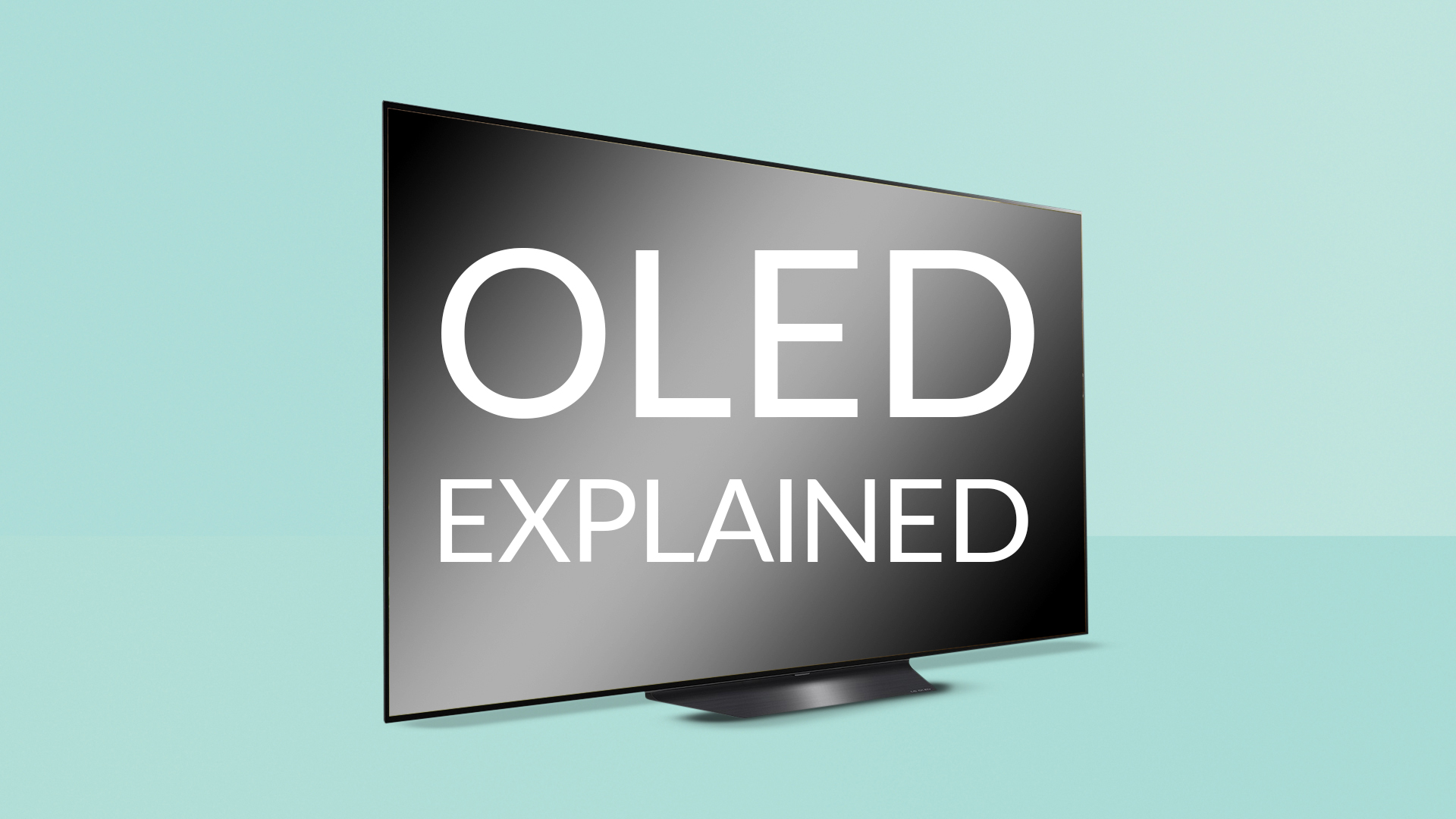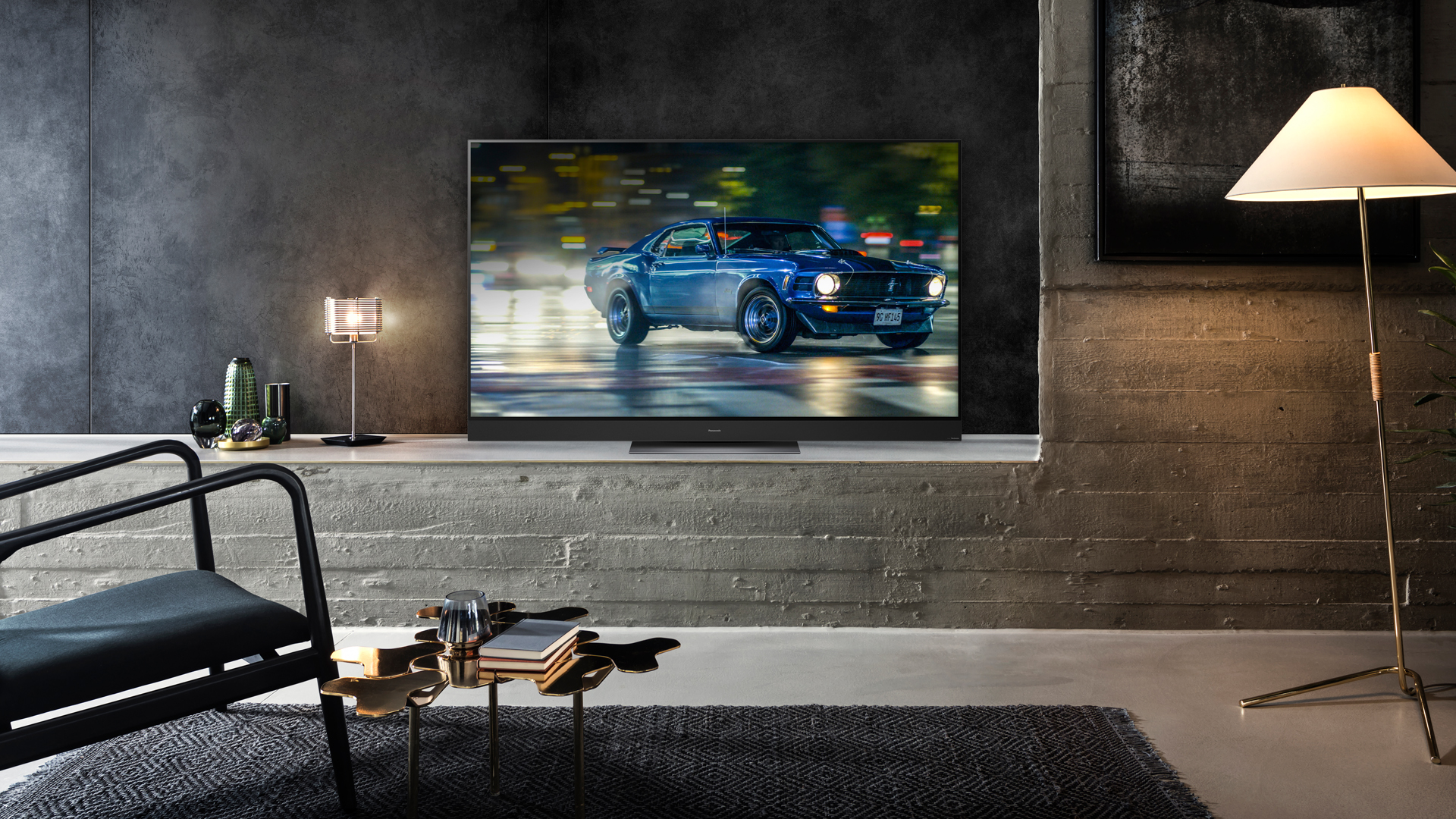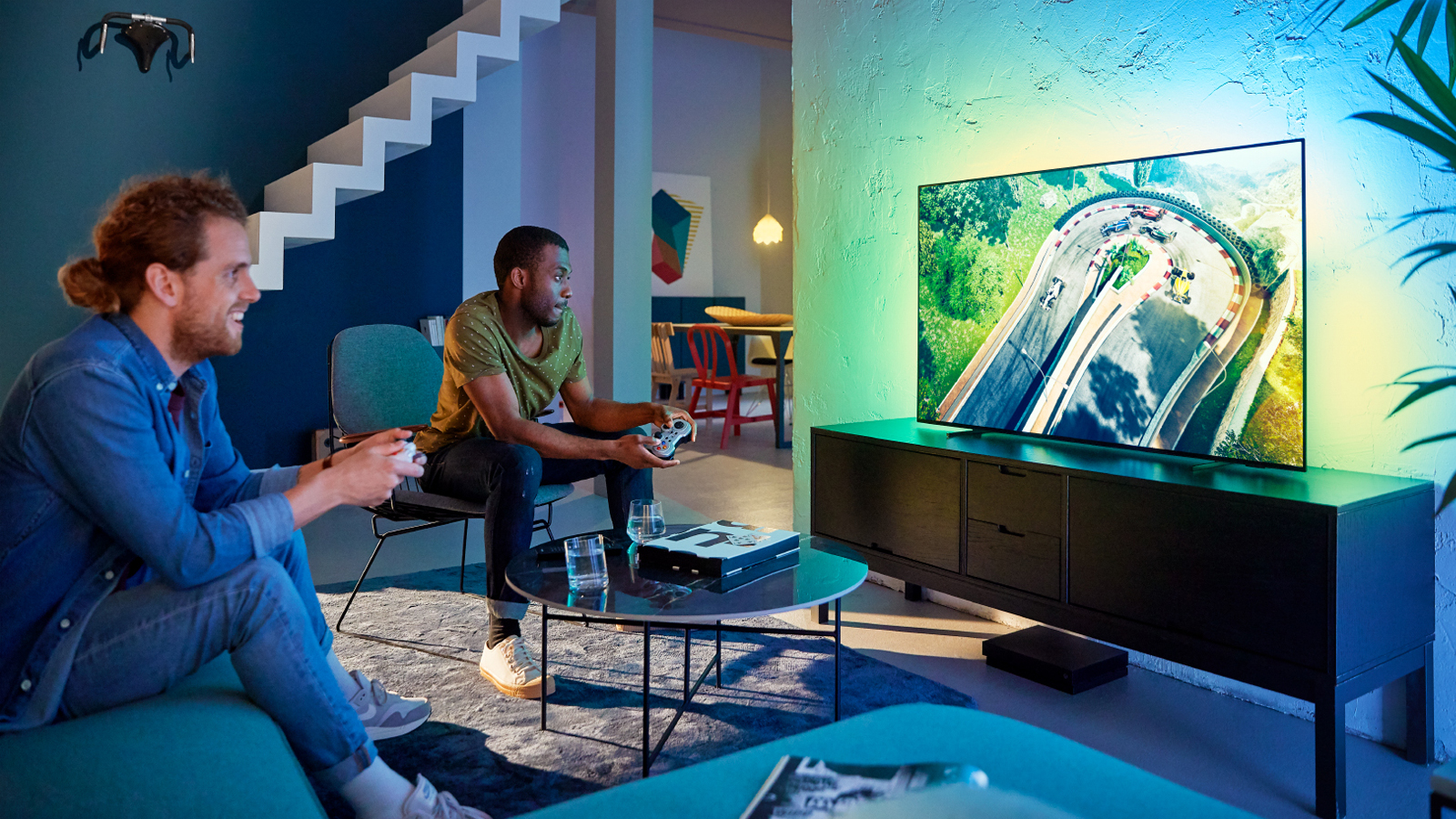
There are so many similar-sounding TV technologies today – LED, OLED, QLED, et al – that it's hard to know what's what. OLED is one of the most popular technologies for the best TVs, and you'll hear it talked up a lot by reviewers like us and store staff, but what it actually means is rarely discussed – we're here to tell you exactly what OLED is, and why it's worth paying attention to.
OLED stands for 'organic light emitting diode'. The LED part you're probably already familiar with – LED lights are tiny light bulbs. On an OLED TV panel, each of its pixels is a collection of teensy LEDs in itself.
They output their own light, and when they're not outputting light, they're as black as they would be were the screen switched off – something that other types of TV can't achieve. This enables them offer gigantic contrast (the difference between how dark a screen can go and how light it can go), and that's their big selling point, because it creates images that look much more like how they were captured on film (and what the eye sees).
- Meet the best OLED TVs
- OLED vs QLED: the two top TV techs compared
- Best soundbars – upgrade your TV with these speakers
OLED explained: How it works
Basic science time: An LED is a tiny, energy-efficient light that illuminates when electrons pass from an electron-rich material into an electron deficient one.
A single OLED cell is essentially the same thing. The 'organic' part of the name refers to the material used to make the magic happen: OLEDs use small carbon-based molecules or polymers, which differ from the inorganic chemicals used in traditional LEDs.
These simpler organic light-producing materials are lighter, more flexible and cheaper than inorganic conductors, and make more complex screen designs easier to pull off – necessary if you want to pack in millions of pixels.
To discover how an OLED screen creates colour, we're going back to school. White light is a mixture of red, green and blue, and each kind of screen employs a different method to prise white light apart into those component colours (or a mix of them), since they're what you need to see.
Get all the latest news, reviews, deals and buying guides on gorgeous tech, home and active products from the T3 experts
LCD TVs make use of filters to selectively cut a white backlight into each individual colour, blocking red and green so that you only see blue, say.
OLED does things slightly differently. An LED can only output a single colour at a time, so LG's OLED panels – all TV manufacturers use panels made by LG, so this applies no matter which TV maker you buy from – uses a two-layer sandwich of materials that outputs blue and, oddly, yellow.
Why? Yellow, in light-mixing terms, is a combination of green and red. Mix that with blue and you get white – and using two coloured layers rather than three reduces the complexity and potential thickness of the panel. A colour mask over the top of each pixel filters that light into the colour that's required.
Put simply: in an LCD TV, pixels can't generate their own light – a light behind the panel has to do this, which shines through the pixels to reach your eyes.
In an OLED panel, the pixels themselves generate the light, meaning the panel can be thinner and the light can be more controlled.

OLED explained: What are the benefits?
As we've mentioned, OLED's contrast capabilities are absolutely peerless. If a pixel goes to black, it's turned off entirely. On LCD TVs (which include LED and QLED TVs), it's very hard for TVs to go completely black, because they use a bright backlight behind the pixels to actually generate light, and it's not easy to block that light totally (it tends to make blacks look grey, or to bleed through into dark areas from lighter ones).
On OLED, that's no problem since every pixel can be set to the exact level of brightness at the exact colour it needs to be. This makes OLED TVs renowned for their accuracy to the original vision and nuance of a movie – for moody stuff especially, the subtlety of an OLED TVs images are just fantastic.
It also means that a bright area can be right next to a very dark area, with no bleed through from the light area contaminating the dark – there's a realism to this that you don't realise your current TV is missing until you see it.
This makes OLED excellent for high dynamic range (HDR) video, which records a bigger range of contrast and wider colours than standard video – OLED can really bring out everything that's been recorded.
OLED colour reproduction is generally the most accurate out there, since each pixel (and, specifically, its brightness) is individually addressable, though this does depend on the quality of the processor in your TV.
OLED TVs also have excellent visibility from angles other than straight-on – though the colours change on some older sets when viewed from an angle, on modern sets it's highly reliable.
OLED's flexible nature means screens are not constrained to any particular proportion, resolution, or style, and the fact that it produces lighting and colour from the same pixels means they can be made incredibly thin – LG's thinner-than-4mm wallpaper TV being a prime example.
They can also literally be flexible (LG, again, has showed this off with the rollable Signature R) and they can even be transparent – there have been lots of prototypes of TVs can disappear when off. This tends to be very expensive currently, but it does work!

OLED explained: What are the downsides?
Though OLED is capable of stunning quality in its images, it's not perfect. The single most obvious downside when compared side-by-side with similarly priced LCD panels is brightness.
You will certainly find much better brightness on QLED panels especially – if you're in a room with a high amount of ambient light or sunlight, OLED screens will appear more washed out, and the image will struggle to punch through. In a dark, controlled room, OLED is in its element, but when we say LCD TVs can go brighter, we mean much brighter – around 50% brighter for mid-range sets, and several times brighter at the higher end. This makes OLED arguably less versatile than good LCD TVs in many living rooms – though OLED TVs are still much brighter than cheap LCD TVs.
And while OLED is often more accurate with its colours, it's also not as vibrant as QLED, which tends to blast its highly saturated image directly into your retinas. This is partly a preference thing, but a lot of people really like the vibrance of a QLED set compared to OLED (though Philips makes OLED TVs with especially punchy colours, so it's not that OLED can't achieve this – it just mostly doesn't).
OLED has traditionally trended towards the more expensive end of the market, and while this is improving, it means OLED has only just reached the sub-£1000/$1000 price. Its available screen sizes are also usually more limited than those of LCD, since LCD is a much easier tech to scale.
There is also the potential for image retention problems on OLED TVs. It's extremely rare on new sets, but if you were to leave one news channel on basically 24 hours, the logo would become a ghost in the corner. You would have to go to extremes to make this happen in practice, but it is possible.
OLED explained: Is it right for you?
Our guide above should help you know what you're looking at when you see an OLED TV in a store, and help you with the pros and cons of OLED technology in practice. But here's a very brief rundown of what you need to think about when choosing whether to go with an OLED TV or not:
OLED IS GOOD FOR:
• Rich, deep contrast that looks truly realistic
• Accuracy of colours
• Excellent viewing angles for people sitting off-centre
• This designs can be wall-mounted discreetly
• Suitable for rooms that get little direct sun or dedicated viewing rooms
OLED IS WEAK FOR:
• Brightness – it struggles to overcome sunlight especially
• Potential image retention – if you want to leave a new channel on all the time, it's a risk
• Bold colours – if you like it punchy and eye-grabbing rather than accurate
• And sets start from four figures, so they're not especially wallet-friendly
Now head to our list of the best TVs and pick from the OLED (or LCD) TVs we have, in a range of budgets!
- The best 55-inch TVs – the smallest size OLED TVs (currently) come in
- The best 65-inch TVs – the other common size for OLED

T3 magazine's own Gadget Guru is a 25-year veteran of the tech writing wars, and has the scars to prove it. He's written for the UK's biggest technology publications, and knows everything from smart doorbell voltage needs to how to bend Windows to his every whim.
